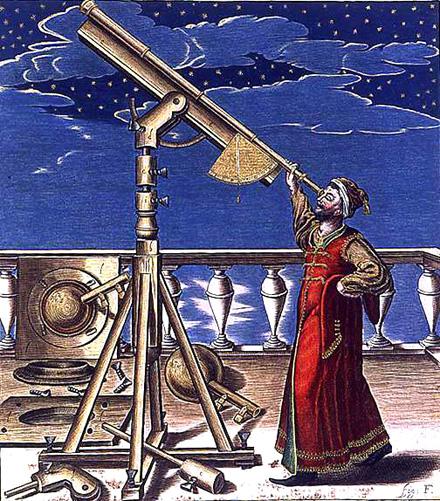Timeline Of Major Human Astronomical Events
Astronomical History
Human beings have always been fascinated with the heavens above. Since ancient times we believed it to be the mysterious realm of the gods. Early humans have also keenly noted the movements of the Sun, Moon, planets, stars and seasons while fearing comets and meteorites. As the years passed our knowledge of the universe gradually increased, gaining speed recently as technology has accelerated!
Key Astronomical Events Throughout History!
Before Christ - BC
- 3000 - Babylonian astronomical records begin.
- 1000 – Chinese astronomical records begin.
- 280 - Aristarchus proposes heliocentrism; a model placing the Sun the centre, with Earth as just one planet orbiting it. Few took the theory seriously.
- 270 – Eratosthenes makes an accurate estimate of the size of the Earth.
- 164 - The earliest recorded sighting of Halley's Comet is made by Babylonian astronomers.
- 130 – Hipparchus draws up the first star catalogue.
Anno Domini – AD
- 140 - Ptolemy publishes his star catalogue ‘Almagest’, listing 48 constellations and endorses the geocentric (Earth-centred) view of the universe. His views go unquestioned for nearly 1500 years!
- 400 – The Hindu cosmological time cycles explained in the Surya Siddhanta, calculated the earth’s year to within 1.4 seconds!
- 1054 - Chinese astronomers and Native-American rock carvings record a supernova exploding in the Taurus; this would form the Crab Nebula.
- 1543 - Nicolaus Copernicus publishes De revolutionibus orbium coelestium containing his theory that Earth travels around the Sun.
- 1608 - Dutch eyeglass maker Hans Lippershey invents the refracting telescope.
- 1609 - Johannes Kepler publishes his New Astronomy with his three laws of planetary motion. Almanacs based on his laws prove to be highly accurate.
- 1610 - Galileo Galilei announces his observations of spots on the Sun, craters on the Moon and four satellites of Jupiter - proving that not everything orbits Earth.
- 1631 – Transit of Mercury predicted by Kepler is observed.
- 1668 - Isaac Newton builds the first reflecting telescope, his Newtonian telescope.
- 1687 - Isaac Newton publishes his first copy of the book Philosophiae Naturalis Principia Mathematica, establishing the theory of gravitation and laws of motion.
- 1705 - Edmond Halley calculates that the comets recorded at 76-year intervals from 1456 to 1682 are one and the same and predicts it will return again in 1758.
- 1725 – The first ‘modern’ star catalogue is published.
- 1781 - Amateur astronomer William Herschel discovers the planet Uranus, the first to be discovered since ancient times.
- 1784 - Charles Messier publishes his catalogue of star clusters and nebulas (i.e. M31) which is still in use today.
- 1800 - William Herschel splits sunlight through a prism and discovers the invisible infrared which lays the foundations of spectroscopy.
- 1801 - Italian astronomer Giuseppe Piazzi discovers the first asteroid and named it Ceres.
- 1838 - Friedrich Bessel uses the method of stellar parallax to calculate the distance to 61 Cygni, the first star to measure its stellar distance.
- 1843 - German Amateur astronomer Heinrich Schwabe, announces his discovery of a regular cycle in sunspot numbers.
- 1846 - Neptune is discovered by German astronomer Johann Gottfried Galle while searching in the position suggested by Couch Adams and Urbain Le Verrier due to its gravitational pull on Uranus’.
- 1870 – 1900 – Great developments in astronomical photography with increasing resolution and detail.
- 1906 – Ejnar Hertzsprung establishes the standard for measuring the true brightness of a star and shows there is a relationship between colour and absolute magnitude for 90% of the stars in the Milky Way Galaxy.
- 1916 – German physicist Karl Schwarzschild uses Albert Einstein's theory of general relativity to lay the groundwork for black hole theory.
- 1920 – Red-shift noticed in distant galaxies (thought to be nebula at the time)
- 1923 - Edwin Hubble discovers that the "Andromeda Nebula" is a galaxy (Andromeda Galaxy) far beyond our own.
- 1929 - Edwin Hubble discovered that the universe is expanding and that the farther away a galaxy is, the faster it is moving away from us. Two years later, Georges Lemaître suggests that the expansion can be traced to an initial "Big Bang".
- 1930 - Clyde Tombaugh discovers the dwarf planet Pluto.
- 1962 – Interplanetary probes reach the planets for the first time with Mariner 2 and Mariner 4.
- 1965 – The weak radio signals (cosmic microwave background) coming from all parts of the sky is discovered. It is the remnant of the Big Bang that created the universe 13 billion years ago.
- 1967 – Pulsars discovered. See star types.
- 1990 – The Hubble Space Telescope is launched which would eventually produce spectacular images of distant stars, nebulae, and galaxies.
- 1992 – The first object beyond Pluto is discovered. The first confirmed discovery of an exoplanet.
- 2003 – Mike Brown and his team begin discovering a number of objects beyond Pluto (such as Eris, Sedna, Makemake, Haumea), which results in Pluto being demoted to a dwarf planet.
- 2008 - 2008 TC3 becomes the first Earth-impacting meteoroid spotted and tracked prior to impact over Sudan.
- 2012 – The first visual proof of the existence of black holes is published.
- 2015 – The first detection of gravitational waves.
- 2017 - Believed to be the first interstellar asteroid, 1I/2017 U1 (Oumuamua), enters the solar system, passes the Sun & leaves the solar system again.


History Timeline Astronomy
History Timeline Astronomy



